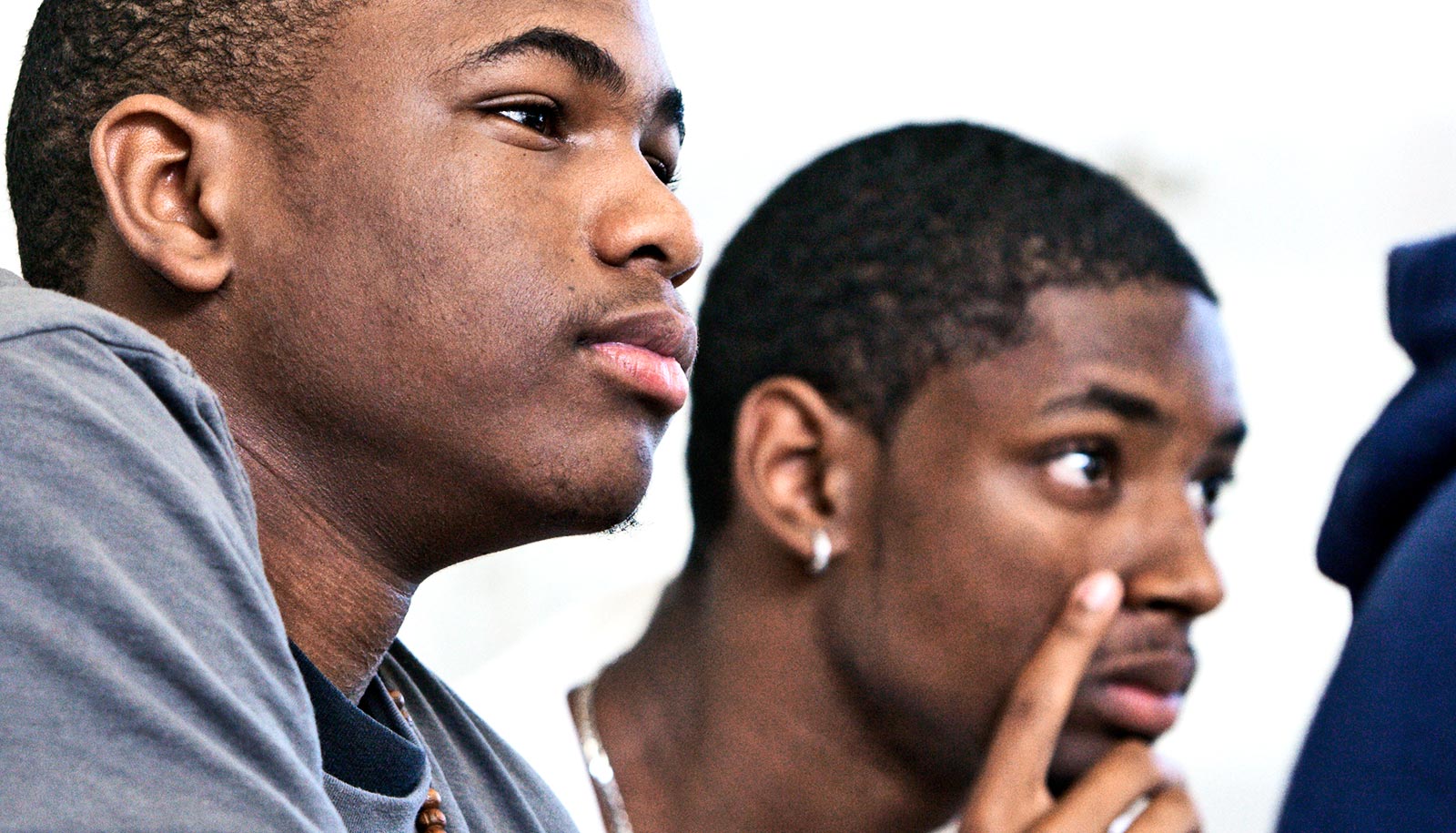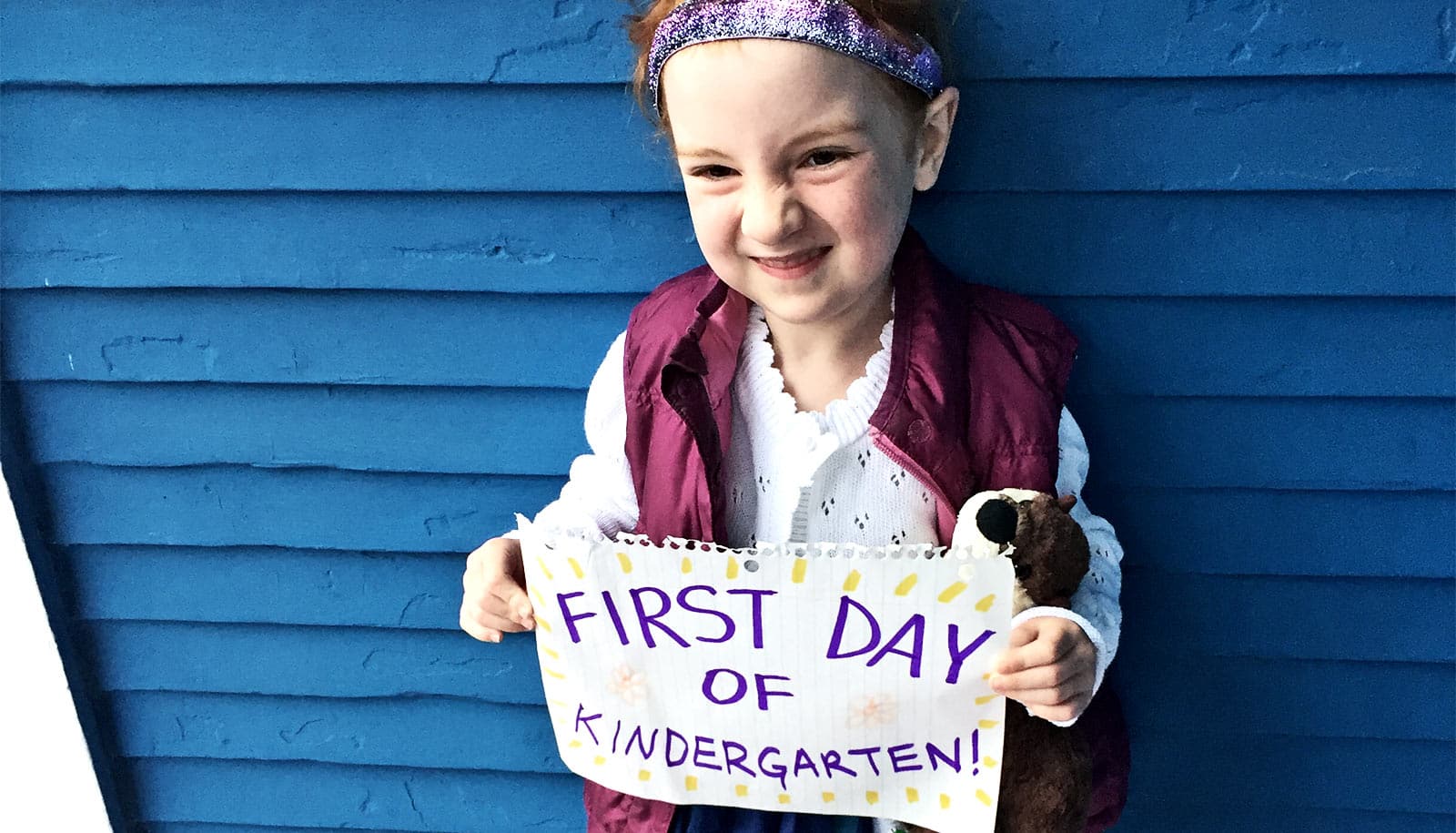Access to an achievement program called “Manhood Development” significantly reduced the number of black male students who dropped out of high school, a new study shows.
The study found smaller reductions in the number of black female students who dropped out as well, suggesting a possible spillover effect.
School leaders in Oakland, California launched the initiative nearly 10 years ago, the first of its kind in the nation: a program targeted exclusively to black male high school students that was a part of their regular classes during the school day.
Taught by black male instructors, the Manhood Development course emphasizes social-emotional learning, African and African American history, and academic mentoring, drawing on culturally relevant teaching methods to counter stereotypes and create a stronger sense of community and belonging in school.
As hundreds of communities across the country invest in similarly targeted programs as part of the national “My Brother’s Keeper” initiative, which former President Barack Obama introduced in 2014, the new study provides leading evidence supporting the promise of these investments.
“Many historically marginalized students experience schools as highly alienating spaces,” says Thomas S. Dee, professor of education in the Stanford Graduate School of Education (GSE). “The targeted design of this program, and the evidence of its impact, challenges us to radically reconsider how we think about promoting equity in education.”
The National Bureau of Economic Research published the findings as a working paper.
Dropping out is ‘catastrophic for success’
The Manhood Development course is the centerpiece of the African American Male Achievement (AAMA) program, which the Oakland Unified School District launched in 2010. The program created a new model for a targeted curriculum by offering classes specifically for black male students during the school day, rather than episodic or extracurricular programming.
Initially available to ninth graders in three Oakland high schools, the program soon expanded to serve students at higher grades in all nine of the district’s regular, comprehensive (not alternative) high schools.
The classes, which meet daily, include units such as “The Emotional Character of Manhood,” “The Struggle for Liberation and Dignity,” and “The Black Male Image in American Media.” Students also participate in community-based projects, such as oral histories of black residents in Oakland, and field trips that expose them to colleges and careers.
“Evidence has shown when some students improve, their peers will also improve.”
A district review in 2010, when the program began, documented high rates of absenteeism, dropout, and suspension among black male students at Oakland Unified. Though black males made up 16% of the student population, they represented 42% of suspensions annually. Roughly 20% of black male students were chronically absent across all grade levels, and 55% of black males were off-course from graduating on time, compared with 37% of students in the district overall.
“We know that failing to complete high school has dramatic, long-term economic consequences,” Dee says. “It’s catastrophic for success in the labor market. It implies worse health outcomes, lower levels of civic engagement, and increased likelihood of being imprisoned. Completing high school and being college- and career-ready is fundamentally important for almost any dimension of human welfare you can identify.”
Manhood Development benefits female students, too
Using enrollment and dropout data from the California Department of Education, Dee and his coauthor, Emily K. Penner, a former postdoctoral fellow at the GSE who is now an assistant professor of education at the University of California, Irvine, found that access to the AAMA program significantly reduced the number of students who dropped out of Oakland Unified schools, particularly in ninth grade.
In the average pre-AAMA school-grade cohort of about 61 black males, access to the program reduced the number who dropped out over the next year by 43%, from about five students to three.
Meanwhile, between the graduating classes of 2010 and 2018, the high school graduation rate for black males in Oakland schools increased from 46% to 69%—a gain that exceeded districtwide improvement by about 3 percentage points.
The researchers also found evidence of smaller but statistically significant reductions in the dropout counts of black female students: When the program became available in a certain school and grade level, the number of black female students who returned to school the following year increased by 1.8 percentage points.
“Evidence has shown when some students improve, their peers will also improve,” Dee says.
Make students feel valued
In 2014, several years after Oakland Unified launched the AAMA program, Obama introduced My Brother’s Keeper, a national public-private partnership supporting mentorship and educational programs for young men of color. Nearly 250 communities from all 50 states have committed to the initiative, which the Obama Foundation now runs.
The AAMA and My Brother’s Keeper programs adopt an approach known as targeted universalism, which takes into account that while certain goals may be universal—such as preparing young people to graduate from high school and pursue a career or further education—students from different backgrounds have different levels of access to resources and opportunities. Instead of pursuing the same strategies for all students, a targeted approach addresses the varying needs and circumstances of different groups.
“The idea of America as a melting pot is not the experience for many people in this country,” Dee says. “These initiatives are compelling schools to reconceive how they engage diversity—with very specifically targeted interventions to help students feel affirmed and respected, where they have a voice and a community with shared experiences and shared cultural reference points.”
Designing a curriculum around individual social identities represents a new and controversial direction for educational policy, but this study suggests that targeted universalism is worthy of serious consideration and further research, Dee says.
“More generally, it also provides new quantitative evidence showing that educational practices that make students feel valued and critically engaged are an effective—and comparatively affordable—way to unlock students’ learning potential.”
The Raikes Foundation and the Mindset Scholars Network funded the work.
Source: Stanford University



